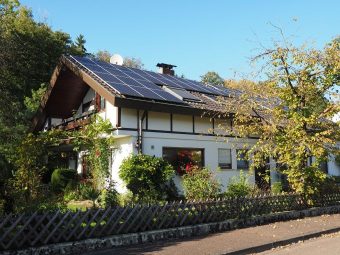
South Australia’s level of minimum demand hit a new record low this weekend – barely a week after the previous benchmark was set – with a fall to just 587 MW last month.
The record eclipsed the previous mark by nearly 200MW – with AEMO data showing minimum demand at 1.30pm of exactly 587.8MW, compared with the previous low mark of 786.42 MW posted last month.
The key here appears to be the moderate temperatures of early spring, which meant few air conditioners switched on, combined with excellent solar output, with the state’s more than 700MW of rooftop solar producing 538.54 MW at the time of minimum demand.
That is a phenomenal share of 47.8% of the state’s electricity demand being met by rooftop solar (compares with 36% in the previous record last week) and is clearly a record for South Australia, and for that matter in any large grid anywhere in the world.
As we reported last week, the tumbling records confirm that the times of record low demand have shifted from the night to the middle of the day.
The Australian Energy Market Operator has predicted that by 2019, record low demand may fall to just 354 MW, and within 10 years the grid demand may fall to zero because of the increasing amount of rooftop solar. This is also likely to occur in Western Australia around the same time.
South Australia is the first region where rooftop solar PV has caused a shift in minimum demand from night time to the middle of the day (most states still have electric hot water being switched on at night, when it would make sense to use the “solar sponge” as Queensland has suggested).
The impact of rooftop solar is being felt in prices – look at the black line that shows prices fall as rooftop solar accounts for a sizeable share of demand during the day.
Note, also, the negative price of minus $44/MWh at 6am when there was abundant wind and a constraint on the connector with Victoria.
South Australia is the first region where rooftop solar PV has caused a shift in minimum demand from night time to the middle of the day (most states still have electric hot water being switched on at night, when it would make sense to use the “solar sponge” as Queensland has suggested).
“It’s absurd to continue having hot water heating at this hour,” says Dylan McConnell, from Melbourne’s Climate and Energy College.
“It’s completely contradictory to the original intention of having water heating at this hour: to use ‘off-peak’ electricity. In many cases, this is actually the peak – and off-peak has shifted to the middle of the day.”
AEMO chief Audrey Zibelman has welcomed this change in technologies and load curves as “not a bad thing”, but they do have to be managed differently.
It also questions the need for old-fashioned concepts such as “baseload”, which would struggle to find a niche in a market dominated by wind and solar, where mostly “dispatchable” and flexible generation is needed to fill in the gaps. Wind energy is already producing more than 100% of local demand at certain times.
As we note in our updated story about prime minister Malcolm Turnbull’s rooftop solar and battery storage system in his Point Piper mansion, AEMO predicts that around 40% of Australia’s supply could come from “distributed generation”, which effectively means rooftop solar and storage.
That sort of solar and storage is likely to be more useful to the grid operator than oldcoal-firedd power stations.
And new analysis from Bruce Mountain at Carbon and Energy Markets suggests exactly that: rooftop solar and battery storage systems would be better suited for AEMO to manage the changing grid than spending vast amounts of money in extending the life of ageing, unreliable and increasingly expensive coal generators such as Liddell.
Source: cleantechnica.com



